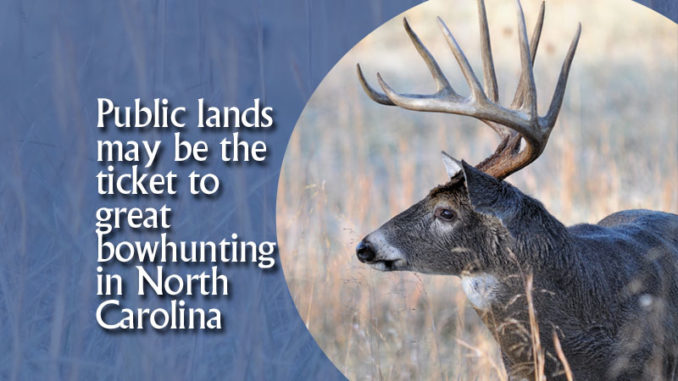
Several game lands will meet just about any archery hunter’s needs.
In the late 1960s and into the 1970s, North Carolina had one game land — Butner — with enough whitetail deer to make bowhunting trips worthwhile.
Before it became part of the Butner-Falls of the Neuse Game Land in the 1980s, Butner’s “Archery-Only Zone” near the state mental hospital actually was North Carolina’s only public land where a bowhunter could go and have a reasonable chance of releasing an arrow at a deer.
Stories are legendary of hunters starting to put up climbing stands in the pre-dawn darkness at Butner’s “Gas Line” area only to have an archer in the next tree whisper, “Hey, buddy, go put that thing up somewhere else.”
Back then, deer were plentiful in Butner’s gun-free zone, having been pushed there by Granville County’s hounds and hunters. Inside the archery-only sanctuary, whitetails flourished, and the N.C. Wildlife Resources Commission gained access to this deer-rich oasis for bowhunters by creating the state’s first archery-only zone.
Thankfully, the time of one state game land crowded with whitetails and archers is a fading memory.
Since the late 1970s, deer have spread across North Carolina. Last season, hunters harvested more than 173,000 whitetails, and nine percent were killed by hunters using crossbows or traditional archery equipment.
With archery season opening in September, bowhunters typically get the first “shot” at deer when acorns start dropping, especially white oak acorns, giving them a unique opportunity to take a deer and scout for places to hang stands for later use.
With that in mind, here’s a look at some of the state’s top game lands for archery hunters this season.
Butner-Falls of the Neuse
This game land encompasses 28,489 acres around Falls of the Neuse Lake, a 12,410-acre water supply impoundment for Raleigh and Durham.
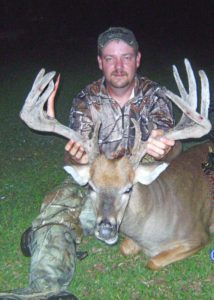
The game land is marked by hardwood slopes and agricultural fields or pasture land along its periphery.
Butner-Falls actually spreads across three counties — Durham, Granville and Wake — and whitetails live in all three. Because deer are spread around so evenly, hunting pressure isn’t high during bow season.
With a little scouting and map work, bowhunters usually can find productive places away from the roads that meander through the game lands. The game land also has several archery-only zones, including around the southern portion of the lake, starting at the Barton Creek Access area and east to the Falls Lake Dam.
However, the most popular archery-only zone remains around the town of Butner on the northern edge of the game lands, adjoining the southern border of the state mental hospital’s property. This section also joins Camp Butner, the National Guard land where the Piedmont’s first organized hound hunts on public lands took place in the 1950s. Many bowhunters still visit the Knapp of Reeds Creek area, and the N.C. Bowhunters Association holds an annual 8-day bow hunt and camping experience for members and guests in October.
But the entire game-lands section around Falls Lake, with only a few scattered exceptions, offers great venues for bow hunters. Many hunters use boats to access land and take stands and equipment to places that aren’t easily reached by road or on foot.
In 2011, the Wake County section of Butner-Falls of Neuse, produced more deer for bowhunters (480), than in any other county in North Carolina.
R. Wayne Bailey/Caswell
The R. Wayne Bailey/Caswell Game Lands are well-known to most Tarheel State sportsmen as the first great public lands for turkey hunting. The 17,778 acres south of Yanceyville provided live-trapped turkeys that later were transplanted across the state.
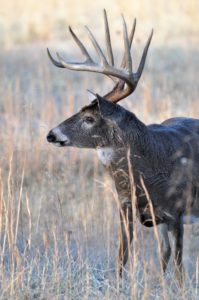
However, the same factors that make this game land excellent turkey range also produce whitetail deer, including a few bucks with impressive headgear.
The region is marked mostly by rolling oak ridges and pine-studded hills, along with pastures and crop land. The Commission also plants food plots, thins timber stands and conducts controlled burns to improve the habitat for wild game. Some farmers also tend crops through the game lands rental program.
This game land isn’t one contiguous property but is scattered across almost a dozen large acreages, including an archery-only section between Marshall Graves Rd., Boy Scout Rd. and south of County Line Creek. Most bowhunters call the archery-only zone “The Boy Scout Camp.”
“There’s so much land that if you’re not seeing deer at one spot, you can go down the road a mile and find some,” said Joey Thompson, the N.C. Bowhunters Association’s records chairman. “I like to hunt with my bow at Caswell, and a lot of times, I’ll go during gun season.”
Thompson said deer often escape the pressure of gun hunters by heading for the archery-only zone near the Boy Scout camp — and he’s ready and waiting for these deer to appear.
“I often go (to the Boy Scout Camp) the third week of gun season,” he said. “A lot of guys don’t like to bow hunt during cold weather, but that’s one of my favorite times to be at archery-only places. (A few years ago) I killed one of my biggest-bodied deer — a 4-year-old 6-pointer that weighed 210 pounds — in the archery-only zone near the Boy Scout Camp.”
The other nice thing about hunting during archery season at Caswell is the game land nearly always offers good chances to view wildlife and perhaps get ideas where to hunt wild turkeys in the spring.
“You are always going to see wildlife at Caswell Game Lands,” Thompson said. “It’s full of deer, turkeys, foxes and coyotes. It’s blessed with wild game.”
Roanoke River Wetlands/NWR
If a bowhunter could choose the perfect habitat for hunting deer, he’d probably place the Roanoke River Wetlands/National Wildlife Refuge Game Lands near the top of the list.
This game land, 35,457 acres spread across 17 tracts in Bertie, Halifax, Martin and Northampton counties, covers both sides of the Roanoke River as it winds toward Albemarle Sound.
The river’s bottomlands are the richest in the state and will grow just about anything that farmers plant and deer can eat, particularly soybeans and corn. Because much of the land is protected from timbering near the river, that section contains many acres of old-growth forests, while thicker deer bedding areas also exist. Farmland that borders the game land offers crops that attract whitetails.
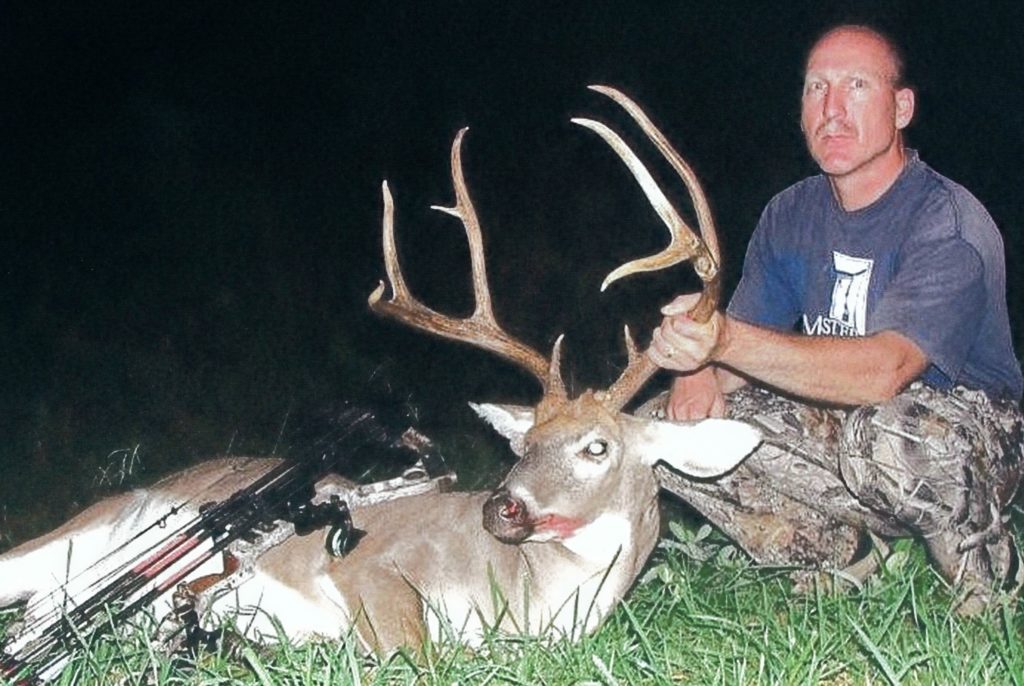
One thing is certain: these deer never lack for food, and the restricted access to the game lands — hunting is restricted to permit-only — affords deer some protection as the game lands are surrounded by some of the state’s biggest commercial-hunting operations.
The Commission-owned land is on the south side of the river, and U.S. Fish and Wildlife Service tracts are on the north side, but the entire area is managed by Commission regulations.
Hunting of any game species is by permit only, but archery hunters rarely are crowded out of a spot to hunt. Hunters can apply by sending $5 to the Commission for the area they wish to visit, and usually there’s no quota of hunters. Visit www.ncwildlife.org/Licensing/PermitHuntingOpportunities.aspx) for details.
Jordan Lake
Just as sportsmen who hunt Butner-Falls of Neuse often see deer along the lake’s shoreline, hunters often spy deer near the banks of Jordan Lake Game Lands, a few miles south of Durham and Chapel Hill.
The 26,997 acres of game land surrounding the 13,940-acre lake are similar to Butner-Falls of Neuse property, as they’re dominated by pine and oak forests, plus crop lands near the game land’s borders, especially the southern section.
Perhaps the best part of the game land for deer hunters is north of US 64 and west of the lake. The region is filled with hardwood ridges and oak trees and is called “The Big Woods.” Many trophy bucks have come from this area.
Jordan has three archery-only areas, the largest off Jack Bennett Rd. near the end of Big Woods Rd. The Commission created two more archery-only zones inside Chapel Hill’s town limits. One adjoins the waterfowl impoundment off the New Hope River north of NC 54, and the other is just north of that impoundment and off Old Chapel Hill Rd. and near New Hope Creek.
Pee Dee River
This game land might include the best chance for bow hunters to take a trophy buck. All a hunter needs to do is scout extensively, because although the game land isn’t large, it’s spread into small sections along the Pee Dee River.
With 6,829 acres in Anson, Montgomery, Richmond and Stanly counties — chopped into many sections from Lake Tillery to southwest of Rockingham — this game land has a lot to offer bowhunters.
The Commission labels the larger sections of the Pee Dee River Game Land as A, B and C. Each has several tracts, and A and B contain archery-only zones.
Section A’s archery-only zone is west of Lake Tillery Dam in Stanley County off Hydro Rd. Section B has multiple tracts of land around Blewett Falls Lake, with an archery-only zone near the dam off Buck Rock Rd.
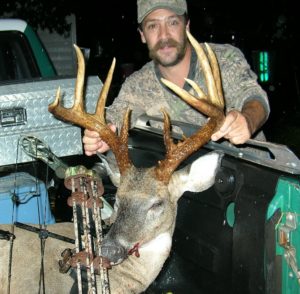
The game land inside Section B is best reached by boat or canoe, particularly the northern sections off Grassy Island Rd, which contains a public boat ramp. Another boat ramp is at the southern portion of Section B at the end of Blewett Falls Rd.
Section C (totally in Richmond County) is one contiguous property southwest of Rockingham and west of the US 1-Osborne Rd. intersection and off Old Cheraw Highway to the river. It’s approximately 1 1/2 miles wide by three miles long at the river’s edge.
This part of the river has some steep banks but has accessible landing spots at flatter areas. The regions accessible by boat often are bottomland hardwoods, but also contain swamps. South Mountain
It’s a good situation for deer hunters when a game land borders a state park.
Hunting is not allowed on state parks, so that land is, in effect, a deer sanctuary. However, whitetails often wander off park lands to find food, giving hunters a chance at them.
That’s the situation on the 21,613-acre South Mountain Game Land south of Morganton that adjoins South Mountain State Park.
The game land features steep hardwood and fir ridges, but the best news is the region receives little bowhunting pressure. Moreover, because the game land is at a higher elevation than public lands in the Piedmont and eastern part of the state, insects are much less of a problem during bow season.
Stretching across Burke, Cleveland, McDowell and Rutherford counties, South Mountain features three camp sites and a CURE (small-game restoration) area that’s open to bowhunting. The neighboring park also has camping facilities.



